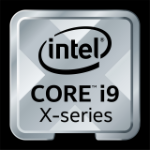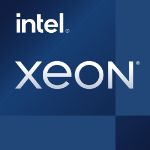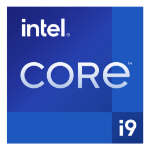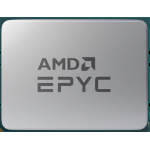We use cookies to make your experience better.
To comply with the new e-Privacy directive, you agree to the privacy policy and our use of cookies.
Intel
Intel Core i9-10900X processor 3.7 GHz 19.25 MB Smart Cache
SKU
CD8069504382100
In Stock
Intel® Core™ i9-10900X X-series Processor (19.25M Cache, 3.70 GHz)

Next Day (UK) Delivery offered on stock items
| Processor | |
|---|---|
| Processor generation | 10th gen Intel® Core™ i9 |
| Processor base frequency | 3.7 GHz |
| Processor manufacturer | Intel |
| Cooler included | No |
| Processor codename | Cascade Lake |
| Memory bandwidth supported by processor (max) | 94 GB/s |
| Thermal Design Power (TDP) | 165 W |
| Processor cache | 19.25 MB |
| Processor ARK ID | 198019 |
| Processor model | i9-10900X |
| Processor threads | 20 |
| System bus rate | 8 GT/s |
| Processor operating modes | 64-bit |
| Processor boost frequency | 4.5 GHz |
| Component for | PC |
| Processor lithography | 14 nm |
| Processor family | Intel® Core™ i9 X-series |
| Processor cores | 10 |
| Box | No |
| Processor socket | LGA 2066 (Socket R4) |
| Processor cache type | Smart Cache |
| Generation | 10th Generation |
| Memory | |
| Maximum internal memory supported by processor | 256 GB |
| Memory types supported by processor | DDR4-SDRAM |
| Memory clock speeds supported by processor | 2933 MHz |
| Memory bandwidth supported by processor (max) | 94 GB/s |
| Supported memory types | DDR4-SDRAM |
| Memory channels | Quad-channel |
| ECC | No |
| Graphics | |
| Discrete graphics card | No |
| On-board graphics card model | Not available |
| On-board graphics card | No |
| Discrete graphics card model | Not available |
| Power | |
| Thermal Design Power (TDP) | 165 W |
| Technical details | |
| Thermal solution specification | PCG 2017X |
| Intel® Turbo Boost Technology | 2.0 |
| Intel® Hyper Threading Technology (Intel® HT Technology) | Yes |
| Intel® AES New Instructions (Intel® AES-NI) | Yes |
| Execute Disable Bit | Yes |
| Enhanced Intel SpeedStep Technology | Yes |
| PCI Express slots version | 3.0 |
| Supported instruction sets | SSE4.1, SSE4.2, AVX 2.0, AVX-512 |
| Scalability | 1S |
| Embedded options available | No |
| CPU configuration (max) | 1 |
| Product type | Processor |
| Intel Virtualization Technology for Directed I/O (VT-d) | Yes |
| Intel 64 | Yes |
| Thermal Design Power (TDP) | 165 W |
| Supported memory types | DDR4-SDRAM |
| Status | Launched |
| Market segment | Desktop |
| Launch date | Q4'19 |
| Intel Virtualization Technology (VT-x) | Yes |
| Processor cache type | Smart Cache |
| Maximum memory | 256 GB |
| AVX-512 Fused Multiply-Add (FMA) units | 2 |
| Bus speed | 8 GT/s DMI3 |
| Target market | Gaming, Content Creation |
| Features | |
|---|---|
| Maximum number of PCI Express lanes | 48 |
| Thermal Design Power (TDP) | 165 W |
| Processor ARK ID | 198019 |
| Thermal solution specification | PCG 2017X |
| Execute Disable Bit | Yes |
| PCI Express slots version | 3.0 |
| Supported instruction sets | SSE4.1, SSE4.2, AVX 2.0, AVX-512 |
| Scalability | 1S |
| Embedded options available | No |
| CPU configuration (max) | 1 |
| Market segment | Desktop |
| Harmonized System (HS) code | 85423119 |
| Export Control Classification Number (ECCN) | 5A992C |
| Commodity Classification Automated Tracking System (CCATS) | G077159 |
| PCI Express CEM revision | 3.0 |
| Processor special features | |
| Intel Virtualization Technology for Directed I/O (VT-d) | Yes |
| Intel 64 | Yes |
| Intel Turbo Boost Max Technology 3.0 | Yes |
| Intel® Optane™ Memory Ready | Yes |
| Intel® Turbo Boost Technology | 2.0 |
| Intel® Hyper Threading Technology (Intel® HT Technology) | Yes |
| Intel® AES New Instructions (Intel® AES-NI) | Yes |
| Enhanced Intel SpeedStep Technology | Yes |
| Intel Virtualization Technology (VT-x) | Yes |
| AVX-512 Fused Multiply-Add (FMA) units | 2 |
| Intel® Deep Learning Boost (Intel® DL Boost) on CPU | Yes |
| Intel® Turbo Boost Max Technology 3.0 frequency | 4.7 GHz |
| Operational conditions | |
| Tjunction | 94 °C |
| Packaging data | |
| Package type | Retail box |
| Logistics data | |
| Harmonized System (HS) code | 85423119 |
| Other features | |
| Maximum internal memory | 256 GB |
| CPU configuration (max) | 1 |
You may also be interested in
| Product |
 Intel Core i9-10900X processor 3.7 GHz...
Login for pricing
Intel Core i9-10900X processor 3.7 GHz...
Login for pricing
|
 Intel Xeon E-2386G processor 3.5 GHz 1...
Login for pricing
Intel Xeon E-2386G processor 3.5 GHz 1...
Login for pricing
|

Popular
Intel Xeon E-2388G processor 3.2 GHz 1...
Login for pricing
|

Hot Product
Intel Core i9-12900KS processor 30 MB...
Login for pricing
|

Recommended
AMD EPYC 9124 processor 3 GHz 64 MB L3
Login for pricing
|

Bestseller
Intel Core i9-14900F processor 36 MB S...
Login for pricing
|
|---|---|---|---|---|---|---|
| SKU |
CD8069504382100
|
CM8070804494716
|
CM8070804494617
|
BX8071512900KS
|
100-000000802
|
BX8071514900F
|
| Manufacturer |
Intel
|
Intel
|
Intel
|
Intel
|
AMD
|
Intel
|
| Processor lithography |
up to 22nm
|
up to 22nm
|
up to 22nm
|
N/A
|
N/A
|
N/A
|
| Processor family |
Intel Core i9 X-series
|
Intel Xeon E
|
Intel Xeon E
|
Intel Core i9
|
AMD EPYC
|
Intel Core i9
|
| Processor socket |
LGA 2066 (Socket R4)
|
LGA 1200 (Socket H5)
|
LGA 1200 (Socket H5)
|
LGA 1700
|
Socket SP5
|
LGA 1700
|
| Processor cores |
10
|
6
|
8
|
16
|
16
|
24
|
| On-board graphics card |
N
|
Y
|
Y
|
Y
|
N
|
N
|
| Discrete graphics card |
N
|
N
|
N
|
N
|
N
|
N
|
| Cooler included |
N
|
N
|
N
|
N
|
N/A
|
Y
|
| Package type |
Tray
|
Tray
|
Tray
|
Box
|
N/A
|
Box
|

